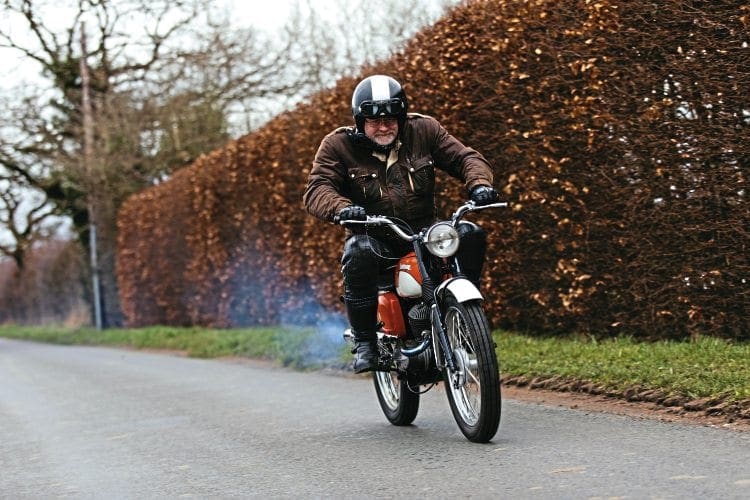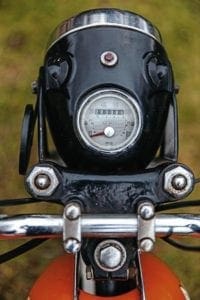Words: Oli PHOTOGRAPHY: Gary Chapman
IN THE EARLY 1950s BSA could claim the title of the largest producer of motorcycles in the world – “One in four” went the famous slogan “is a BSA”.
The reason for this was partly down to the hard work of the German DKW company, not BSA’s design shop. Its 125cc two-stroke engine had been offered around as war reparations and used by Harley-Davidson and the Soviet Minsk company, and the technology was used by Yamaha, MZ, CZ and Polish brand WSK among others.
In Britain it was hawked around various manufacturers, being offered to Villiers – which rather sniffily refused to look at it – and eventually was taken up by BSA.
BSA built a 125cc version of the engine which was a mirror image of the DKW powerplant and fitted it with a three-speed gearbox into a basic rigid frame, dubbing the bike the Bantam.

BSA produced anything from 250,000 to half a million Bantams (records are vague) between 1948 and 1971, making the little Bantam the biggest selling British motorcycle by a long way.
It was not made at the BSA factory at Small Heath but at a satellite factory near Redditch, which unusually employed a high proportion of female workers.
The Bantam was the first steed of many a teenager, cheap to buy and a step ahead of the many Villiers-engined rivals. It was used to commute, to deliver telegrams and as the workhorse of the nation. It was tunable enough to make it competitive on the track and easily modified and light enough to perform off-road too, with trials versions extremely successful.

Once it grew to 175cc and was given a swingarm it had a reasonable turn of speed too. It’s fair to say that the sales of the Bantam helped BSA’s finances and allowed it to build Rocket Gold Stars and 650 Lightnings and the like.
Like many of the machines in BSA’s range, by the mid-1960s it was getting a bit long in the tooth and the Japanese had been gaining a foothold, not least with their neat 125cc dual-purpose trail bikes. In 1966 the company tasked its assistant export sales manager, Peter Glover, with finding a way of selling more Bantams.

He was told the production line would be closed if he couldn’t manage the task, leaving BSA with only the planned Ariel 3 tricycle as a lightweight commuter.
Over a discussion in a pub with BSA designers he came up with the Bantam Bushman. Peter devised a cobby little single with modified gearing, a startling orange and white paint job and a bunch of parts from BSA’s stores including the forks from the BSA Barracuda 250 and the high-level big bore exhaust from the Bantam D14/4 Sports.
Peter told The Classic Motorcycle in 1993: “I got away with murder in those days. None of the directors knew anything about the project.”
Read more and view more images in the May 2019 issue of CBG – on sale now!




